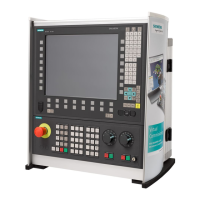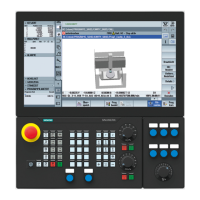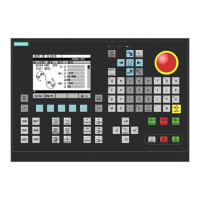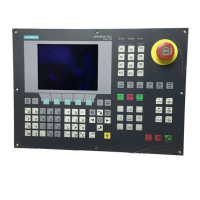Detailed Description
2.2 Functions
Various NC/PLC Interface Signals and Functions (A2)
2-28 Function Manual, 08/2005 Edition, 6FC5397-0BP10-0BA0
Organization of memory area
The user's programming engineer (NCK and PLC) is responsible for organizing (structuring)
this memory area.
Every storage position in the memory can be addressed provided that the limit is selected
according to the appropriate data format (i.e., a DWORD for a 4-byte limit, a WORD for a 2-
byte limit, etc.).
The memory is accessed via the data type and the position offset within the memory area.
Access from NC
To allow the NC to access PLC variables (from a part program) quickly, $ variables are
provided in the NCK. The PLC uses a function call (FC) to read and write $ variables. Data
are transferred to and from the NCK immediately.
$ variables can be accessed (by the NCK) during preprocessing and in synchronized
actions.
Data type information is determined by the $ variable data type, the position index is
specified as an array index (in bytes).
The following $ variables are available:
$A_DBB Data byte (8 bits)
$A_DBW Data word (16 bits)
$A_DBD Data double word (32 bits)
$A_DBR Real data (32 bits)
Ranges of values
$A_DBB(n) <= x <= 255
$A_DBW(n) -32768 <= x <= 3276
$A_DBD(n) -2147483648 <= x <= 2147483647
Access from PLC
The PLC uses function calls (FC) to access the memory. These FCs ensure that data are
read and written in the DPR immediately, i.e., not just at the beginning of the PLC cycle. FCs
receive data type information and the position offset as parameters.
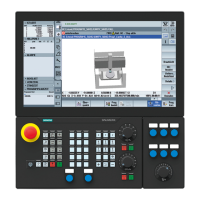
